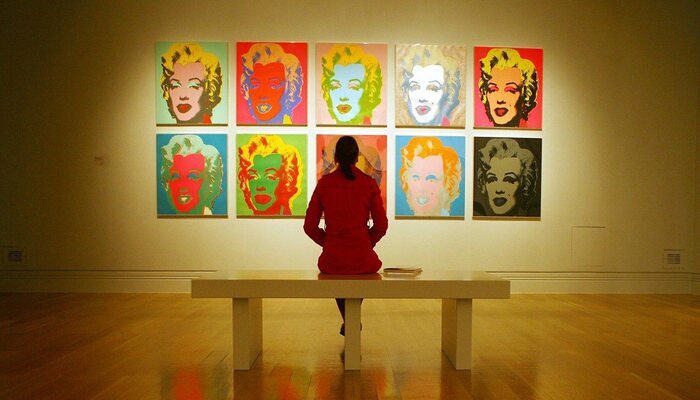Investments in art have become an increasingly popular way to diversify financial portfolios, offering more than just aesthetic value. As the art market continues to grow, many are recognizing its potential as a profitable asset class.
From contemporary works to classic pieces, the art world provides a wide range of opportunities for savvy investors. What once seemed like an exclusive realm is now accessible to a broader audience, eager to explore its profitable potential.
If you’re curious about how investments in art can work for you and why this market is booming, keep reading to discover how you can get started and what to look for in a successful art investment.
The Growing Appeal of Art as an Investment
Art has evolved beyond being just a form of aesthetic expression to becoming a profitable asset class. Over the years, the art market has consistently shown its potential for substantial returns.
While traditional investments, such as stocks and real estate, have their place in a balanced portfolio, investments in art offer a distinct advantage. The value of artworks can appreciate over time, often outpacing inflation and providing investors with a hedge against market volatility.
In South Africa, the art market has been expanding, with local and international collectors and investors increasingly looking towards African art.
Works by renowned South African artists, such as William Kentridge, Irma Stern, and Walter Battiss, are in high demand, making it an exciting market for investors.
Understanding the Dynamics of the Art Market
Before diving into investments in art, it’s essential to understand the dynamics of the market.
Unlike traditional investments, the art market is influenced by a combination of factors, including an artist’s reputation, the rarity of the piece, and overall market trends. Artworks are generally unique, and their value is often subjective, depending on factors such as the artist’s career stage and the significance of the piece.
However, investments in art are not without risks. The art market can be volatile, with prices fluctuating depending on various factors like changes in taste, economic conditions, and shifts in demand.
While some artworks can achieve remarkable returns, others may not appreciate in value, making it crucial for investors to conduct thorough research and seek expert advice.
Factors Driving Profitability in Art Investments
Several factors contribute to the profitability of investments in art. One of the primary drivers is the artist’s reputation and the demand for their work. When an artist gains recognition or their work is featured in prominent galleries or museums, the value of their pieces can increase significantly.
For example, South African artists who have made a global impact, such as Nelson Makamo and Nandipha Mntambo, have seen their work fetch high prices at auctions.
Another key factor is the scarcity of the artwork. Limited-edition prints or one-of-a-kind paintings tend to attract more attention from collectors, driving up demand and, consequently, the value. Additionally, the provenance or history of the artwork plays a significant role in determining its worth.
Pieces with a rich history, such as works that have been owned by notable collectors or featured in high-profile exhibitions, often carry higher prices.
The Role of Auction Houses and Galleries
In South Africa, auction houses and galleries play a significant role in facilitating investments in art. Major auction houses, such as Strauss & Co, offer a platform for buying and selling art, while galleries provide a space for collectors and investors to view and purchase artworks.
Auction results often give investors valuable insights into the current market trends, helping them make informed decisions.
Galleries, on the other hand, are instrumental in promoting artists and their work to the public. Many investors prefer to buy directly from galleries to secure pieces at a fair price before they hit the auction circuit.
The relationship between galleries and collectors is crucial in shaping the art market, and it’s important for investors to cultivate strong connections within this network.
Investing in Contemporary African Art
Contemporary African art has become one of the most exciting sectors of the global art market, and South Africa is at the heart of this movement. Investments in art from emerging African artists have seen impressive growth in recent years.
Collectors are increasingly drawn to contemporary African art for its unique perspectives, vibrant colors, and storytelling.
South Africa has produced some of the continent’s most celebrated contemporary artists, and the demand for their work continues to rise. Investing in this sector not only offers financial rewards but also provides an opportunity to support emerging talent and contribute to the growth of African culture on the global stage.
Artists such as Jo Ractliffe, Kendell Geers, and Zanele Muholi have gained international acclaim, making their works valuable assets for collectors.
The Importance of Research and Due Diligence
As with any investment, due diligence is crucial when considering investments in art. Investors should take the time to educate themselves about the artists, the market trends, and the overall value of the pieces they are interested in purchasing.
Many investors choose to work with art advisors who can provide guidance and help them navigate the complex world of art investments.
Researching auction results, attending gallery exhibitions, and networking with other collectors are all essential steps in understanding the art market.
Additionally, it’s important to assess the condition of the artwork, as this can significantly impact its value. Investing in well-maintained pieces ensures that the artwork retains its potential for long-term appreciation.
Risks and Challenges in Art Investments
While investments in art can be highly profitable, they are not without risks. As mentioned earlier, the art market is subject to fluctuations, and there is always the possibility that a piece may not appreciate as expected.
Economic downturns or changes in artistic trends can impact the value of artworks, making it essential for investors to diversify their portfolios and not rely solely on art as an investment vehicle.
Additionally, the illiquid nature of art investments poses another challenge. Unlike stocks or real estate, it can take time to sell an artwork and realize a profit. Investors should be prepared for the long-term nature of art investments and have a clear strategy for managing their collection.
How South African Investors Can Get Started
For South African investors interested in investments in art, the first step is to familiarize themselves with the local art scene. Attending art fairs, auctions, and exhibitions is a great way to learn more about the artists and the market.
Additionally, networking with established collectors and art professionals can provide valuable insights into the industry.
It’s also advisable to start with a modest investment and gradually build a collection over time. As the market for African art continues to grow, there will be ample opportunities for investors to secure valuable pieces that will appreciate in value.
Whether focusing on contemporary South African art or exploring works from other parts of the African continent, there is significant potential for profitability.
Conclusion
In conclusion, investments in art offer South African investors an exciting opportunity to diversify their portfolios while supporting the growth of African culture.
While the art market can be volatile and requires careful research, the potential for high returns and the unique value of owning a piece of history make it an attractive investment.
By staying informed, building relationships with galleries and auction houses, and being patient with the long-term nature of art investments, South African investors can unlock the profitable potential of the art market.





